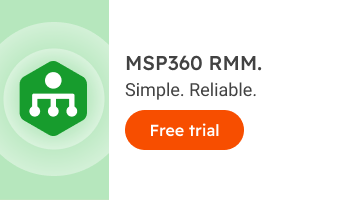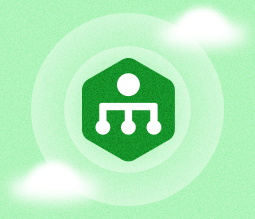MSP Business
Network Performance Monitoring Tools: Key Features Explained
You likely know you need to include a network performance monitoring (NPM) tool in your monitoring toolbox in order to manage modern software environments, in which network performance is critical to overall performance.
But do you know how to compare NPM solutions and find the best tool for your needs? That can be a complicated question to answer, given that NPM tools come in different forms - open source and proprietary, for instance - and offer varying sets of features.
Keep reading for guidance on evaluating and selecting a network performance monitoring tool.
Key Features of NPM Tools
- Automatic endpoint discovery: Modern NPM tools can automatically detect endpoints on your network and collect data about them.
- Application awareness: NPM tools should be able to monitor networks within the context of the applications running on them.
- Network visibility: NPM tools help you understand what is happening within each segment of your network.
- Network security: Although NPM tools do not focus solely on security, they can help identify network anomalies that could be signs of an attack.
- Visualization: NPM tools should offer visualizations to help you analyze monitoring data.
- Proactive analysis: Modern NPM tools will alert you to emerging problems, so that you can respond proactively, rather than merely fixing issues after they arise.
- Alerting and notifications: NPM software should deliver alerts when issues arise.
Evaluating Your NPM Tool Needs
The first step in choosing an NPM tool is determining what you will use the tool for.
You may already have an NPM solution in place, but are seeking a new one because your existing NPM tool is outdated or no longer capable of handling the environment you need to monitor. For instance, you may have moved some applications to the cloud, but have NPM software that works only with on-prem environments.
It could also be the case that you currently use several NPM tools, and you want to consolidate your tool set. If this is true, you should already have a sense of which of your NPM tools works best, or which features they are all lacking.
Or, you may not be using any NPM tool currently, but need to implement one, so that you can monitor networks in addition to monitoring applications, or distinguish effectively between problems that arise at the network level and problems that originate from inside your applications.
After all, given the central role that networks play in the modern user experience, you can't guarantee customer satisfaction if you don't know what is happening on the networks that connect your users to your applications.
Your level of expertise with NPM will depend on which situation you find yourself in. If you are already using NPM software, you'll have a stronger sense of which NPM features are most important to you. If you are starting from scratch, you will need to do more research to identify your network monitoring needs and the best tools for addressing them.
Further reading Network Performance Monitoring
Considerations for Selecting NPM Tools
In addition to evaluating your experience with NPM tools, you should also consider the following factors:
- Business size: NPM tools designed for SMBs may offer different feature sets than those that cater to enterprise use. If you are a smaller organization, you may not need the extensive features of enterprise-oriented NPM software.
- Network size: The number of endpoints on your network, as well as the number of clouds you use and the volume of traffic your applications generate, will impact the type of NPM tool you need.
- Scalability: Do you expect your network to grow in size and complexity over time? If so, your NPM software will need to be able to scale with it.
- Network KPIs: What are your key network performance goals? Is uptime more important than throughput, for instance? Some NPM tools excel at measuring one type of KPI more than others.
- Support for the cloud: In the cloud, you have to consider factors such as VPCs, security groups, tracking traffic between cloud regions and so on. If you use the cloud, then you'll need NPM tools designed for it.
Further reading Local, Cloud and Hybrid Network: Which One Should You Opt to?
Types of Network Performance Monitoring Tools
In general, network monitoring tools can be broken into three main categories.
Open Source Tools
First are open-source NPM tools, such as Icinga and Zabbix. These are usually inexpensive or free, and they tend to be easy to customize. However, they may be more difficult to install and manage, vendor support is often not available and their feature sets tend to be limited.
Proprietary Tools for Network Monitoring Alone
The second category is proprietary tools that focus specifically on network monitoring, like Observium and Kentik. These tools are typically relatively easy to set up and manage (many are available as SaaS solutions), and they have extensive feature sets dedicated to network monitoring.
On the other hand, they are usually not free of cost, and they don't provide much if any, functionality beyond network monitoring (which is fine if you have other monitoring tools in place, but not great if you are looking for an all-in-one solution).
Further reading Monitoring and Alerting with MSP360 RMM
Full-Package Monitoring Tools
The third category of NPM software is tools that provide network performance monitoring as part of a broader feature set, such as the SolarWinds and Splunk suites. These are usually full-package enterprise observability suites that support all types of monitoring - such as synthetic monitoring and application performance monitoring - in addition to network monitoring.
These solutions are likely to be the most expensive and, due to their complexity, it can take some time to learn how to use them to full effect. However, vendor support is usually available, and the tools offer the most comprehensive feature set.
Conclusion
If you have relatively small and simple networks to monitor, a basic open-source NPM tool may suffice. For larger networks or ones that will grow in size and complexity over time, it's worth investing in a proprietary network monitoring tool. And if you have truly large-scale network monitoring needs, consider a full-package monitoring or observability suite that integrates network monitoring alongside other features.


